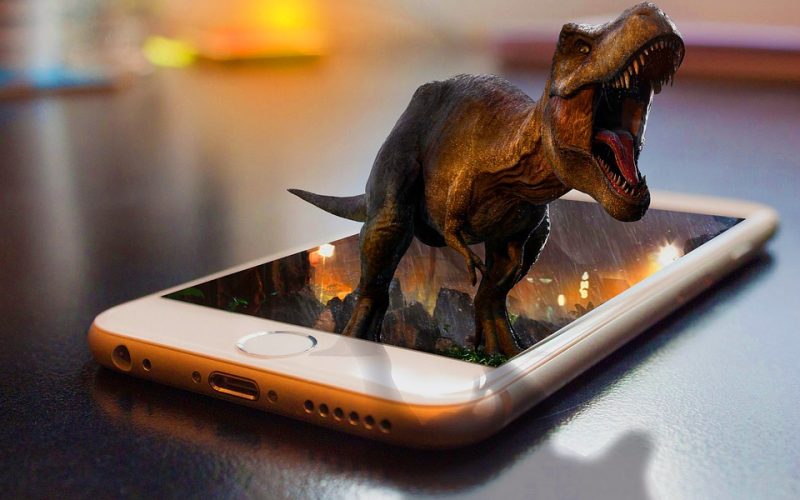Introduction
Augmented reality (AR) has revolutionized the entertainment industry, offering new ways for people to experience games, movies, music, and live events. By blending the physical and digital worlds, AR creates immersive experiences that engage audiences in ways never before imagined. In this article, we will explore ten significant applications of augmented reality in entertainment and how they are transforming the industry.
The Rise of Augmented Reality in Entertainment
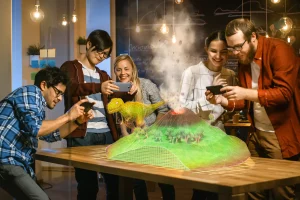
Augmented reality has grown quickly in the entertainment industry over the past few years. This technology allows digital images or information to be placed into the real world through a smartphone, tablet, or AR glasses. The success of AR games like “Pokémon Go” showed the world how popular AR could become. Since then, many industries like movies, music, sports, and even fashion have started using AR to create fun and engaging experiences for audiences.
Benefits of Augmented Reality in Entertainment
One of the biggest benefits of AR in entertainment is the way it increases audience engagement. People no longer just watch or listen to content; they can interact with it in real-time. AR also brings immersive experiences by mixing the real world with the digital one, making things feel more exciting and personal. Another key benefit is that AR can be easily accessed through devices most people already own, like smartphones, which makes it widely available.
AR in Advertising
Augmented reality is changing how brands advertise. Companies can use AR to create interactive ads that let people engage with their products in a fun way. For example, some brands have developed AR apps that let users see how a product looks or works before they buy it. This adds a layer of entertainment to shopping and makes ads more engaging for consumers.
10 Applications of Augmented Reality in Entertainment
1. AR in Gaming

One of the most popular uses of augmented reality in entertainment is gaming. AR games, like “Pokémon Go,” use a device’s camera to superimpose game elements into the real world. This allows players to interact with their surroundings while engaging in a virtual adventure. The mix of reality and gaming creates a unique, interactive experience that captivates users.
2. Immersive Movie Experiences

AR technology has found its way into cinema, allowing viewers to enhance their movie-watching experience. With AR apps, users can access additional content, such as behind-the-scenes footage, trivia, or character backgrounds, by scanning posters or objects related to the film. This added layer of interaction brings movies to life and extends the viewing experience beyond the screen.
3. Live Concerts and Events

Augmented reality has taken live entertainment to the next level by providing immersive concert and event experiences. AR can project 3D visuals on stage or allow viewers at home to feel like they are part of the crowd. For example, artists can incorporate holographic elements or allow fans to interact with live-streamed performances using AR apps, making concerts more engaging for remote audiences.
4. Virtual Theme Parks
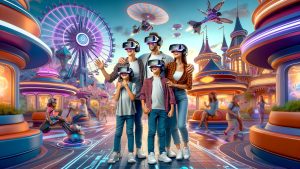
AR has the potential to transform traditional theme park rides into unforgettable adventures. Visitors can wear AR glasses or use their smartphones to see interactive characters, animations, and game-like features integrated into physical rides. This combination of real-world attractions and virtual elements offers a new level of entertainment.
5. Sports Viewing Enhancement
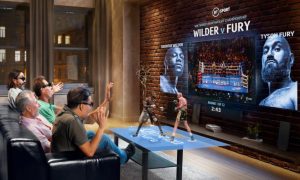
AR is also changing the way people watch sports. By integrating AR into live broadcasts, viewers can see real-time statistics, player information, and game strategies superimposed over the action on the field. This helps fans better understand and engage with the game, creating a more dynamic and informative viewing experience.
6. AR in Music Videos
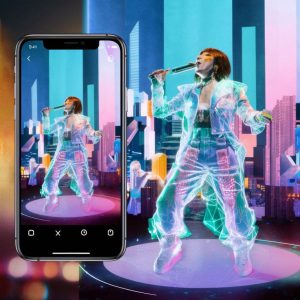
Music videos are another area where AR is making an impact. Artists can use AR to create interactive music videos that allow fans to explore different scenes or interact with objects within the video. This creates a personalized experience, where fans can view content in a way that suits their preferences, enhancing their connection to the music and artist.
7. Interactive Museum Exhibits
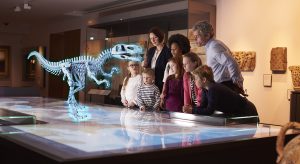
Museums have begun to use AR to create interactive exhibits, allowing visitors to explore additional content and information through their devices. For example, by scanning an artifact with an AR app, users can view animations, videos, or detailed descriptions that provide more context. This adds an educational and entertaining element to traditional museum experiences.
8. Enhanced Theater Productions
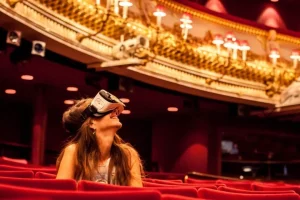
Theater productions are incorporating AR to provide audiences with more engaging and visually striking performances. Using AR, directors can create special effects that blend with live actors on stage, transforming sets into dynamic, ever-changing environments. This not only enhances the visual aspect of performances but also adds depth to storytelling.
9. AR for Social Media Filters
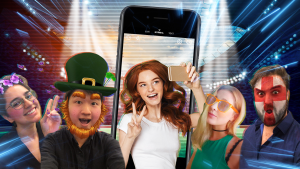
AR filters have become a staple in social media platforms like Instagram and Snapchat. These filters allow users to alter their appearances, add fun animations, or interact with 3D elements through their smartphone cameras. This form of entertainment keeps users engaged while providing an interactive way to express themselves.
10. Augmented Reality in Retail Entertainment

Retailers are using AR to create fun, interactive experiences for customers. For example, AR apps can help users visualize how furniture would look in their homes or allow them to try on virtual outfits. These engaging experiences combine shopping with entertainment, blurring the lines between commerce and fun.
AR in Education and Entertainment

AR is also being used to make learning more fun and entertaining. For example, educational apps use AR to teach subjects like science or history by allowing students to interact with 3D models of planets, animals, or historical landmarks. This makes learning more enjoyable and easier to understand, while blending education with entertainment.
AR for Personalized Experiences
One of the best features of AR is its ability to personalize entertainment. For instance, augmented reality can allow users to customize virtual environments in games or design unique avatars that look just like them. This level of personalization makes people feel more connected to the entertainment they are consuming, which leads to a richer, more immersive experience.
AR in Home Entertainment
Augmented reality is bringing exciting new possibilities into our homes. Some streaming services and TV shows now offer AR experiences that viewers can access through their smartphones or tablets. By scanning an object or location, viewers can unlock extra content, such as character profiles or interactive games related to the show. This adds an extra dimension to watching TV or movies from home.
Challenges of Using Augmented Reality in Entertainment
Even though AR is exciting, there are some challenges in using it in entertainment. One challenge is the cost of creating AR content, which can be expensive. Another challenge is making sure that AR experiences work well on all devices, since not everyone has the same technology. There’s also the need for strong internet connections to support AR, which isn’t always available in all places. Lastly, some people might find AR too complicated to use at first, which could limit its audience.
The Future of Augmented Reality in Entertainment

The future of AR in entertainment looks very bright. As technology improves, AR will become even more realistic and easier to use. More industries will start using AR to engage with their audiences, from virtual concerts to interactive sports experiences. In the future, AR glasses might become more common, letting people experience entertainment in a hands-free way. With endless possibilities for creative applications, AR is set to be a major part of how we enjoy entertainment in the years to come.
Analysis Table: Impact of AR in Entertainment
| Application | Engagement Level | Entertainment Value | Audience Reach | Future Growth Potential |
|---|---|---|---|---|
| Gaming | High | High | Global | Very High |
| Immersive Movie Experiences | Medium | High | Niche | Moderate |
| Live Concerts and Events | High | Very High | Global | Very High |
| Virtual Theme Parks | High | Very High | Local/Global | High |
| Sports Viewing Enhancement | Medium | High | Global | High |
| AR in Music Videos | Medium | Medium | Niche | Moderate |
| Interactive Museum Exhibits | Medium | Medium | Niche | Moderate |
| Enhanced Theater Productions | High | High | Local | Moderate |
| AR for Social Media Filters | High | Medium | Global | Very High |
| Augmented Reality in Retail | Medium | Medium | Global | High |
Comparative Table: Traditional vs. Augmented Reality Entertainment
| Aspect | Traditional Entertainment | Augmented Reality Entertainment |
|---|---|---|
| Interactivity | Limited to passive engagement | Highly interactive with real-time elements |
| Immersion | Generally lacks immersive experience | Deeply immersive, blending virtual and real worlds |
| Audience Engagement | Viewers mostly consume content | Audiences can participate and influence content |
| Cost | Lower upfront costs for traditional media | Higher initial investment but long-term benefits |
| Flexibility | Fixed experience (e.g., films, TV shows) | Adaptable, personalized experiences |
| Technology | Limited reliance on digital innovations | Heavy integration of cutting-edge tech (AR/VR) |
Conclusion
Augmented reality is reshaping the entertainment industry by creating immersive and interactive experiences across various forms of media. From gaming and movies to concerts and museums, AR is enhancing the way we consume and engage with content. As technology continues to evolve, AR will likely play an even larger role in entertainment, offering audiences endless possibilities for immersive enjoyment.






